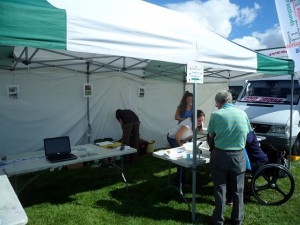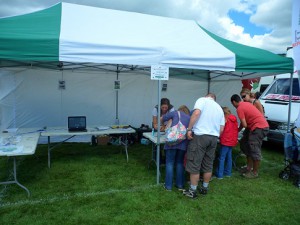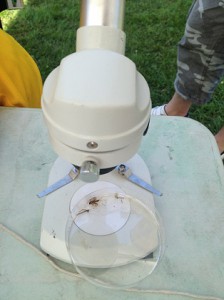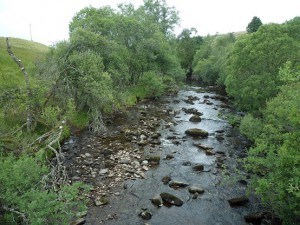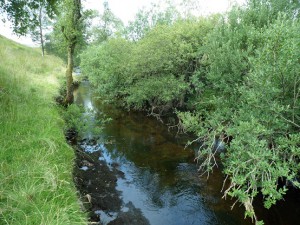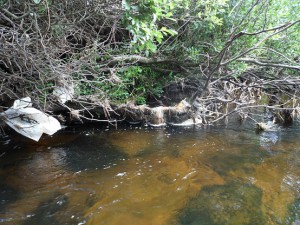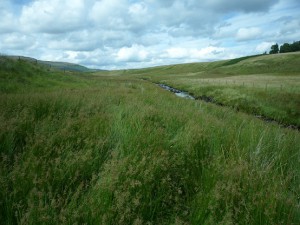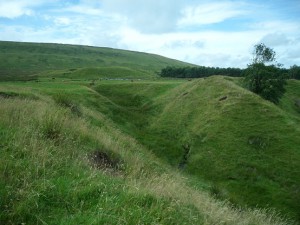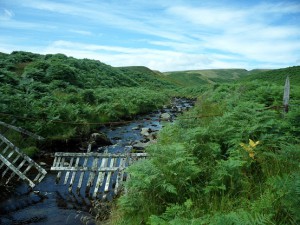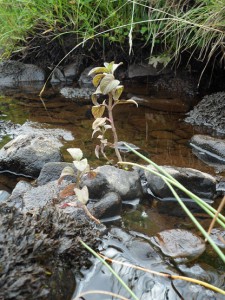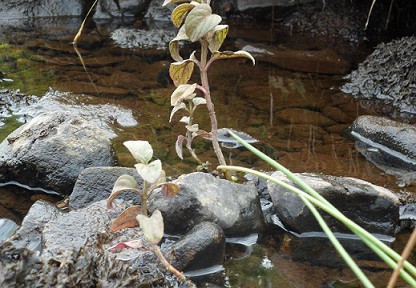
Over the past couple of months my time has been split between community and landowner engagement. Following on from my Doune and Dunblane Show post (see here), I attended another two shows on the Allan Water Catchment; the Braco Show and the Bridge of Allan Highland Games. The main purpose of attending these shows was to raise awareness of flooding, Natural Flood Management (NFM) and the NFM Allan Water Project; however the main attraction was definitely the freshwater invertebrates (bugs and beasties) on the wet laboratory table. Despite this, we managed to get a good number of individuals that live within the Allan Water Catchment interested in flooding and NFM, and also willing to participate in a fun and friendly NFM tree planting group. Hopefully the NFM volunteer group will start within the next few months. So all in all, the shows were very successful for community education and engagement!
I have also met and engaged with a number of landowners in the Allan Water Catchment with the focus being to work alongside them to progress conceptual NFM measures on their land. One such area that I have spent time on recently is the River Knaik, a tributary of the Allan Water that has a large sub-catchment and is deemed to contribute significantly to the flood peak on the Allan Water. I am hoping to work alongside the landowners to get riparian trees planted on the banks of the river that will slow the flood water passing through the area and contribute towards minimising the Allan Water flood peak. However, other issues of landowner concern associated with tree planting must be looked at first, including the type of native woodland that should be planted, fence lines over difficult terrain and water gate maintenance. Therefore I have been out to the proposed site to investigate the concerns and the potential options that may satisfy the landowner.
At the downstream end of the concept tree planting area there are currently fragments of established riparian trees. The photographs of these wet riparian tree species highlight how effective they are for NFM by creating thick, dense and shrubby woodland that’s roots and branches hang in the river slowing the river flow. As the river floods the trees further from the river bank will also provide this function, as well as provide large woody debris in-channel that slows water and creates natural log jams. Therefore riparian trees, such as willow, alder and downy birch are great at minimising flood risk by slowing the flow of water, and the habitats they create are also great for wildlife including commercially important salmon and brown trout.
The picture below shows part of the proposed tree planting area of the River Knaik further upstream, and in contrast to the previous photographs, an open and treeless floodplain with very little rigosity except long rushes to slow flood water. This is an ideal area for riparian tree planting for their previously described natural functions.
Above the wet riparian rush dominant floodplain the most common vegetation found was a mix of tormentil, blaeberry, bell heather and hard fern. These plant species are precursor vegetation of the Forestry Commission’s Native Vegetation Classification woodland 17, that indicate upland oak-birch with bilberry/blaeberry should be planted here (see picture below). Therefore this is the woodland that is proposed to be planted in the higher and dryer parts of the tree planting design. The small yellow flower in the picture below is Tormentil, which gives us an indication of soil PH, as its presence indicates acidic soils that are common in this region of Scotland.
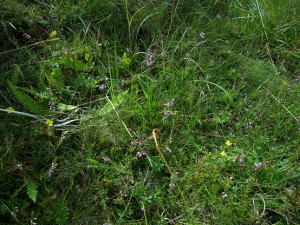
Plant composition of tormentil, blaeberry, bell heather and hard fern indicative precursor vegetation for planting native upland oak-birch woodland with blaeberry
Tree plantations at this site require defence from livestock, such as sheep, and deer that are present in this area and will cause grazing damage to the proposed tree plantation. To keep these animals out suitable fencing and watergates are required. Deciding on the best line for the fencing of the proposed area is challenging at this site. The River Knaik and it’s tributaries are contained within a river gully that can be steep and high in areas, with other smaller river gullies dissecting it (See picture below). Fencing across the steep sides of these gullies can be difficult, and present an issue that will require further discussion with the landowner to comply with their desires to have fencing that is easy to maintain.
Additionally, the other fencing related concern to the landowner is the maintenance of watergates that cross the river and tributaries that enter and exit the proposed fenced area. The landowners concern stems from the River Knaik and it’s tributaries having quite large upland catchment areas that receive a lot of rainfall, making the river prone to flash flooding, which can tear out and damage watergates frequently. Therefore installing watergates which will have the most limited maintenance cost, and can withstand flash floods and potentially woody debris interactions best is being investigated and discussed with the landowner.
Being able to work towards solutions to these issues and concerns with the landowners will hopefully see this proposed NFM measure progress towards reality on the River Knaik. When I was walking around the proposed tree planting area I also came across evidence of natural regeneration of birch and willow, this suggests that the area is trying to return to its natural woodland state but is probably held back by grazing. The photograph below is a picture of a couple of willow saplings on a currently treeless tributary of the River Knaik called Allt an t-Seillich, which in Gaelic translates as Stream of the Willows. I am hoping these willow saplings are a good omen for achieving tree planting on this site and restoring the willows to the Allt an t-Seillich!

